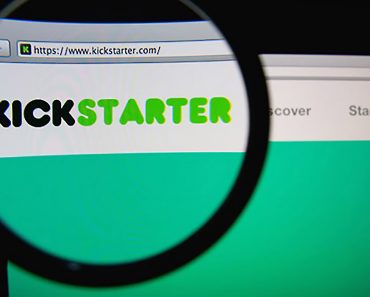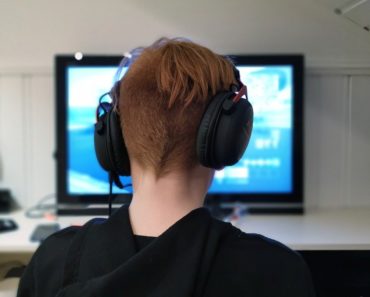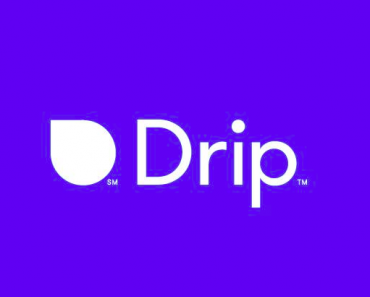Nearly everyone online has heard the term “crowdfunding” at some point in recent years.
The term has become somewhat of a buzzword in its own right, with its meaning becoming more and broader as time goes on.
At its core, though, crowdfunding represents a phenomenon of modern entrepreneurship: the ability to quickly gain attention and support for a product or work that might otherwise never be funded traditionally.
Crowdfunding opens the doors for everyday consumers to help build the products they want, and to get unique perks as a bonus in the process.
If crowdfunding sounds like an appealing offer for you, you aren’t alone.
Hundreds of thousands of businesspeople have struck out to make an impact on the world through crowdfunding, primarily because the cost to entry is little more than cultivating an audience and being willing to offer perks to financial supporters.
However, there are many ways to crowdfund online, and the breakdown of each model can look entirely different.
Kickstarter and Indiegogo
When most people think of crowdfunding, the first name in their mind is Kickstarter. Kickstarter was the first formally recognised crowdfunding platform.
Even though other businesses were running on similar models to those that Kickstarter offered, there wasn’t a real hub for crowdfunding of the same caliber.
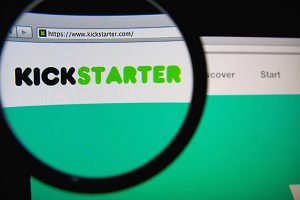
Kickstarter’s popularity was so widespread that many people use their name as a verb in the form of “Kickstarted.” This neologism was almost synonymous with crowdfunding for some time.
Despite Kickstarter’s early domination of the crowdfunding market, however, competitors did rise.
The most direct competition came in the form of a website called Indiegogo, which offered an almost identical base crowdfunding structure as well as an additional feature called “flexible funding.”
Indiegogo’s flexible funding was designed to attract ongoing project and projects with scale.
While Kickstarter (and Indiegogo’s base “fixed funding” option) requires a project to reach a certain level of funding before allowing any funds to be used, the flexible funding option provides for the project to access funds regardless of whether the original goal was met or not.
The invention of the flexible funding option on Indiegogo created an almost instantaneous draw to the site from entrepreneurial creators looking to fund smaller projects with more niche audiences.
An artist looking to create an artbook for their fans could use Indiegogo’s flexible funding to allow their followers to invest in the book without having to worry about the project failing completely from making a wrong estimate of fan interest, for example.
An additional difference between Indiegogo and Kickstarter is how each platform handles the approval of projects and the creation of those projects. Kickstarter, by comparison to almost all other forms of crowdfunding, has a very high barrier to entry.
All Kickstarter projects are vetted by Kickstarter and have to go through approval processes and checks along the line. Indiegogo, unlike Kickstarter, has a very open process by which those looking for funding can quickly build an account and create a project.
Indiegogo goes considerably lighter on their personal involvement with projects, but as a tradeoff, they offer a huge selection of analytics tools to empower the admins of projects on their site.
In addition, Indiegogo has continually expanded its “InDemand” service, which becomes available after a project is successfully funded.
InDemand allows a project owner to extend out their fundraising indefinitely.
Interestingly, Indiegogo has opened up InDemand to projects that were successfully funded elsewhere as well.
One of the most successful products that has undergone crowdfunding on multiple platforms, including Kickstarter, Indiegogo fixed, and Indiegogo InDemand, is Rocketbook.
Rocketbook is a company offering a “smart notebook” that functions much differently than you might expect.
Instead of being purely digital, Rocketbook is a physical notebook you can write in that utilises special ink and receptors to upload images of each page you fill into the cloud.
Also, it is completely reusable; the notebook can be microwaved to clear the specially-designed ink from the pages.
You can see why Rocketbook might garner a lot of attention from tech enthusiasts even if it isn’t a traditionally viable product.
Risk-averse companies might never jump on an experimental idea, but Kickstarter and Indiegogo both helped make Rocketbook a reality, and supporters were able to be a part of that process.
Sustainable Crowdfunding
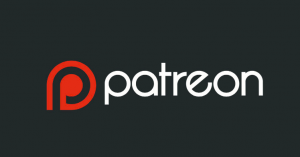 The newest evolution of the basic concept of crowdfunding comes in the form of subscription-like platforms that allow supporters of a creator to donate continually, generally in small payments.
The newest evolution of the basic concept of crowdfunding comes in the form of subscription-like platforms that allow supporters of a creator to donate continually, generally in small payments.
The most prominent player in this arena for years was Patreon, a site founded by musician Jack Conte of the band Pomplamoose to help artists of all stripes build consistent income and fanbases.
However, in the last few months, another major contender, Drip, has risen to compete with Patreon.
Drip has existed since the early 2010s, though it never reached close to the level of success Patreon had. In 2016, though, Kickstarter put its sights on Drip and acquired the company, giving it the boost it needed to thrive.
In November, Drip received a complete rework guided by its new parent company and has now re-launched (albeit in an invite-only format for the time being.)

While Drip cannot hope to immediately outdo Patreon, whose own patrons include comic book artists like Tom Parkinson-Morgan, creator of the wildly popular Kill Six Billion Demons webcomic, and world-famous musician Amanda Palmer, Drip was able to benefit from deals with some of Kickstarter’s own success stories.
For example, Anita Sarkeesian, creator of Feminist Frequency, signed on to be one of Drip’s earliest adopters and endorsers.
While Drip and Patreon both aim to create sustainable, subscription-based incomes for artists, other services go in a totally different direction.
GoFundMe, for example, is more similar to Indiegogo in the way it collects funds, but it focuses primarily on charity causes, aiming to encourage people to help one another in times of need.
Notable GoFundMe campaigns include a campaign to bring Miguel Chaidez, Sr. to the World Series, Haircuts for the Homeless, and a Future for Anna. Mr. Chaidez was a lifelong Dodgers fan who had always dreamed of seeing the Dodgers play in the World Series.
Unfortunately, his diagnosis of stage 3 lung cancer, combined with the limitations of age, seemed to make it impossible for him to see his favourite team play.
GoFundMe supporters made it happen. Haircuts for the Homeless is an organisation that, as the name suggests, aims to provide homeless people with haircuts, a need that is often overlooked.
Finally, A Future for Anna was a project to help an elderly, disabled German woman named Anna secure funds for a healthy future.
Making the Choice
With the number of options available to those seeking crowdfunding, choosing a platform comes down to assessing both personal and project needs.
If your project is designed to solve a societal problem or help an individual, you’ll likely have success on GoFundMe.
However, if you’re a rising artist or band looking to fund your music career, aiming for Patreon or Drip (if you can secure an invite) is likely to be the most successful path for you.
Each crowdsourcing platform available to creators, entrepreneurs, and innovators now has its strengths and weaknesses.
There is no single best platform that stands above the rest, but each platform does absolutely have its specialty.
Whether you go to Kickstarter for the first-party administrative support or choose Patreon for its convenient rewards distribution system, just be sure to assess your needs closely and decide accordingly.
The age of the internet has brought unprecedented connection between creators, fans, businesspeople, and customers, and crowdfunding, as broad of a term as it has become, is a pristine example of that fact.
